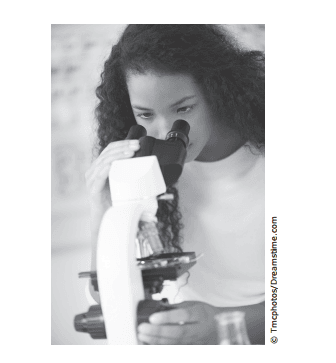
TEKS Biology High School - B.4.A: Prokaryotic & Eukaryotic Cells
Quiz by TEKS Biology High School
High School - Biology
Science (2010) (Archived)
Texas Essential Knowledge and Skills (TEKS)
Feel free to use or edit a copy
includes Teacher and Student dashboards
Track each student's skills and progress in your Mastery dashboards
With a free account, teachers can
- edit the questions
- save a copy for later
- start a class game
- automatically assign follow-up activities based on students’ scores
- assign as homework
- share a link with colleagues
- print as a bubble sheet
4 questions
Show answers
- Q1The picture shows a student using a microscope to study a prepared slide of a single-celled organism. A single-celled organism can be classified as a prokaryote based on the absence of —chromosomesa cell membranea nucleusribosomes30sB.4.A: Prokaryotic & Eukaryotic Cells
- Q2Some students used information they gathered from lab investigations to prepare a table. They entered the table in their lab notebooks. Which of these correctly identifies the two cells described in the table?Both Cell 1 and Cell 2 are eukaryoticCell 1 is prokaryotic, and Cell 2 is eukaryoticBoth Cell 1 and Cell 2 are prokaryoticCell 1 is eukaryotic, and Cell 2 is prokaryotic30sB.4.A: Prokaryotic & Eukaryotic Cells
- Q3Both euglena and cyanobacteria are photosynthetic unicellular organisms found in pond water. The feature that distinguishes euglena from cyanobacteria is the —ability to reproducepresence of ribosomesability to maintain homeostasispresence of a nuclear membrane30sB.4.A: Prokaryotic & Eukaryotic Cells
- Q4A student groups different types of cells as shown. Which table headings should the student use for the two groups?60sB.4.A: Prokaryotic & Eukaryotic Cells
